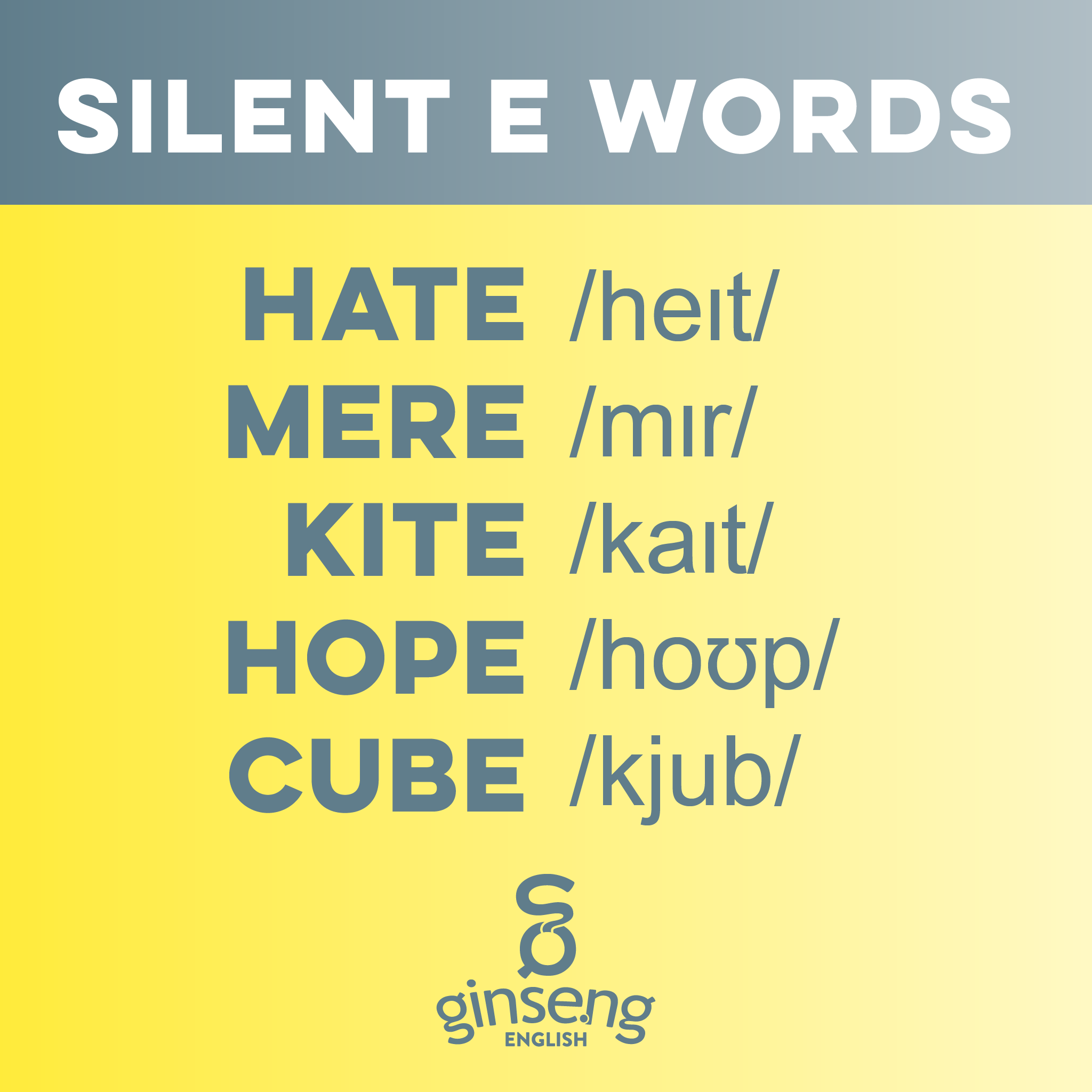The C-V-C Pattern
One of the craziest things about learning English is the relationship between spelling and pronunciation. We don't even need to talk about ought, enough, through, etc, right?
But there are some patterns to learn that can make English a little less crazy. Today let's talk about one of the most important ones: C-V-C words.
But what does C-V-C mean???
I'll tell you. C-V-C means consonant-vowel-consonant. A C-V-C word is a three-letter word that follows the spelling pattern of a consonant, then a vowel, and then another consonant. Remember, vowels are the letters A, E, I, O, U (sometimes Y!), and consonants are all the other letters. For example, top. T is a consonant. O is a vowel. P is a consonant. C-V-C.
Here are some more examples of C-V-C words:
| c | a | t |
| c | v | c |
| r | e | d |
| c | v | c |
| b | i | g |
| c | v | c |
| h | o | p |
| c | v | c |
| b | u | n |
| c | v | c |
Can you see the pattern?
Now, why is this important? It is important because if you can recognize a C-V-C word, you can almost certainly pronounce it, even if it's a new word for you! That's because in C-V-C words, the vowel is almost always a "short" vowel.
Check out the list of the short vowel sounds with examples in the chart.
Double Consonants and C-V-C Words
There is another reason that consonant-vowel-consonant words are important. This one is a little more difficult.
Maybe you know that in English, we sometimes need to double a letter when we add a suffix like -er, -ed, -ing, and -est. This is important for comparative and superlative adjectives, the simple past tense, and the present progressive. For example mad becomes madder, nap becomes napped, win becomes winning, and big becomes biggest. For these words we have double consonants, but not always: nicer, hoped, mining, poorest. At first, this can be very confusing. When do we double the consonant!? How do we know!? C-V-C words!!! You generally need to double the last consonant when adding a suffix to a C-V-C word. There are some exceptions: generally we do not double the consonants W, X, or Y.
Longer C-V-C words
Above we defined C-V-C words as 3-letter words. That makes sense: C + V + C = 3 letters, right? But actually, there are more C-V-C words. It is really about the end of the words. Any one-syllable word that ends in C-V-C also follows the pattern above. Here are some other examples:
| s | t | r | a | p |
| c | v | c |
| s | h | r | e | d |
| c | v | c |
| c | l | i | p |
| c | v | c |
| d | r | o | p |
| c | v | c |
| s | m | u | g |
| c | v | c |
There is one other type of C-V-C word. All of the C-V-C words so far have been one syllable, and most C-V-C words are only one syllable. But some two-syllable words also follow this pattern. Two-syllable words ending in C-V-C, with the stress on the second syllable also follow the C-V-C pattern. The stress is very important here. There are not many words like this, and most are just a prefix added to a shorter word. Most two syllable words have stress on the first syllable. But when you do find a two-syllable word ending in C-V-C, with the stress on the second syllable, you know that you should double the consonant when adding -ed, -ing, -er, or -est.
| en | t | r | a | p |
| c | v | c |
| r | e | g | r | e | t |
| c | v | c |
| s | u | b | m | i | t |
| c | v | c |
| d | e | f | o | g | |
| c | v | c |
| d | e | b | u | g |
| c | v | c |
Complete list of C-V-C Words
Below is a complete list of words that follow the consonant-vowel-consonant pattern.
C-V-C Words with A
bad, bag, bam, ban, bat, cab, cad, cam, can, cap, cat, cav, dab, dad, dam, dap, fab, fad, fan, fat, fax, gab, gag, gal, gap, gas, gat, had, hag, ham, has, hat, jab, jam, lab, lad, lag, lap, mad, mag, man, mat, max, nab, nag, nap, pad, pal, pan, pat, rad, rag, ram, ran, rap, rat, sac, sad, sag, sap, sat, sax, tab, tad, tag, tan, tap, tar, tat, tax, vac, van, vat, wad, wag, wan, war, was, wax, yak, yam, yap, zag, zap
C-V-C Words with E
bed, beg, bet, cel, den, fed, fen, fez, gel, gem, get, hem, hen, hex, jet, keg, led, leg, let, med, men, met, net, peg, pen, pep, pet, red, rep, rex, set, sex, ten, veg, vet, vex, wed, wet, yen, yet, zed, zen
C-V-C Words with I
bib, bid, big, bin, bit, did, dig, dim, din, dip, fib, dig, fit, fix, gig, gin, hid, him, hip, his, hit, jig, kid, kin, kit, lid, lip, lit, mix, nib, nil, nip, nix, pig, pin, pit, rib, rid, rig, rim, rip, sib, sim, sin, sip, sis, sit, six, tin, tip, wig, win, wit, wiz, yip, zig, zip, zit
C-V-C Words with O
bob, bod, bog, bon, bot, box, cob, cod, cog, com, con, cop, cot, coz, dog, dom, don, dot, fob, fog, fox, god, got, hob, hog, hop, hot, job, jog, jot, lob, log, lop, lot, lox, mob, mod, mom, mop, nod, nog, nor, not, pod, pom, pop, pot, pox, rob, rod, rot, sob, sod, sog, son, sop, sot, tom, ton, top, tot, won
C-V-C Words with U
bud, bug, bun, bus, but, cub, cup, cut, dub, dud, dug, fun, gun, gut, hub, hug, hum, hun, hut, jug, jut, lug, mud, mug, mum, nub, nut, pub, pug, pun, pup, pus, put, rub, rug, rum, run, rut, sub, sud, sum, sun, sup, tub, tug, tut, tux, yum, yup
Exceptions
Some words look like C-V-C words, but aren't exactly. For example words that end in -AY and -AW are not really C-V-C words, because the -AY and -AW actually combine into a new vowel sound. The same is true for -OY words and -OW words.
Words ending in vowel-R often follow the spelling patterns of other C-V-C words, but R changes the pronunciation of the vowel before it, creating a sound that is not exactly a short vowel. We call these new vowel sounds R-colored vowels.
More free English resources
Read Next
C-V-C -E Words

